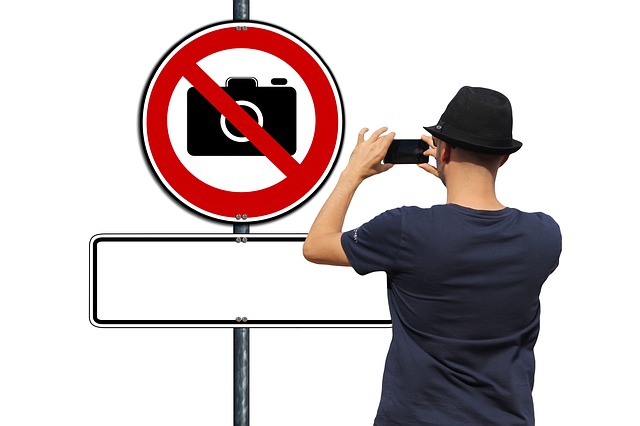“In photography, there is a reality so subtle that it becomes more real than reality.”
“Taking an image, freezing a moment reveals how rich reality truly is.”
These two quotes define ‘what is photography?’ pretty well. Photography is an art where so it takes time and practice to master. Hopefully, this post will help you know the basic idea of ‘what makes a photo?’
General tips
- Holding your camera – If you don’t want your photographs to get blurry and shaky, you need to practice your handling skills. Tripods will help immensely to prevent shake. But some circumstances require you to hold your camera, so here is a basic idea.Hold it with both hands. Take a grip with your right hand on your right side of the camera and place your left hand beneath for support.
- Trying new Perspective – Perspective plays a vital role in emphasizing the subject. Trying different angles can make the same scene change the whole world. Not every angle works for every photograph. When shooting an animal or children, try getting down to their level. Rule of thirds – This is what beginners struggle with. Even I had to make photographs for years after I started using it, so here is the basic idea. The rule says that pictures look more exciting and balanced when they are not centered. Every image can be divided by two vertical lines two horizontal lines and divide the picture into nine equal parts. The vital subject of the photo should be along the four lines or their intersection. You can use the grid option in your camera. You can break this rule but understand it first.
- Clean background – More straightforward, the background more focus on a subject. Try making the background simple and clutter-free. You want the attention of the viewer to be on the main subject of the photo. Try moving the subject or changing perspective. The background needs to be fixed, especially if you want the subject to be on the side.
- The Golden Hour– The best way to learn lighting in the photograph is to take photos of the sun rising and setting. Those are the best time to take photos as they are considered “the golden hour.” Go outdoors to shoot landscapes or still life. The early morning or evening light can give a warm glow and long shadows.
- Be selective- You will take hundreds of photographs, but only a few should make it to your portfolio. Don’t bore others with photos of identical scenes. Every photographer only displays their best work.
- Mistakes – Never delete your bad photos. They are reminders of your mistakes. Make them, learn from them, but don’t let them discourage you. This is an art, and it needs skill. Simplify the mistakes if it is blurry, hold correctly, and try a new angle if it is not focusing on the subject.
Now you know the basics and principles of photography that you can use with any device or circumstances. There is much more in the technical side of making a 2-D image. You need good technical knowledge, good editing software, etc. Let’s go through them one by one and that will help to become best photographer.
There are three most important tools of photography. Here is a simple and brief introduction to them:-

- Shutter Speed – The time it takes for the shutter to stay open is controlled by shutter speed. The longer it stays open more light gets through to the camera’s sensor. Fast shutter speed will lead to freezing action. Slow the shutter speed will make the subject have more motion blur. This is measured in a fraction of a second. If you want to set the shutter speed in your camera, first set the camera to “Shutter priority” mode and select the shutter speed.
- Aperture – It is the opening of your camera lens. It will decide how much light will pass through. The depth of the field will change by changing the aperture of the camera lens. Aperture is inversely related to the depth of field. Wider the aperture, the more light will pass and lead to the narrow depth of field and vice versa. Here, depth of field means the area surrounding the subject. Wider the depth of field, meaning focus will be on surroundings and vice versa. This is expressed as a number known as “f-stop.” E.g., f/8. If the number is low, the aperture is larger. E.g., f/2.5 is larger than f/4. If you are in a dark environment, you may use a large aperture as more light will pass through.
- ISO – It controls the camera sensor’s sensitivity to light. Lower the settings lesser the sensitivity to light and vice versa. This tool helps in different light situations. When there is low light increasing the settings to 400 to 800 will lead to better focus on a subject. Ideally, the setting for shooting outside is 100 to 200. High ISO also as more noise (graininess and blotchy colors).
These three terms are essential in understanding the camera settings. These are also known as the exposure triangle as these tools control how much light will pass through the lens. I would suggest taking a look at your camera’s manual before changing any settings. Now you need to practice more and more with a camera.
Here are a few advanced tips for you. These tips will help you understand what makes a photo more interesting.
- Adjust white balance – Capturing colors more interestingly can be then by changing the setting in the white balancing setting. There will be Daylight, Automatic White Balance, Cloudy, Flash, Shade, Fluorescent, and Tungsten. This setting will change the colors of the photo by adding temperature. Some will make it warmer (on the yellowish-orange side), some may lead to colder (on the blue side). This removes unrealistic color casts, which are rendered white in the photo.
- Flashing is not simple – Flashing in low light or at night, using built-in flash, may lead to unwanted effects like white eyes or bad shadows. Try increasing ISO settings and get good photos. If you have to use built-in flash, go to setting and reduce the brightness to as much as possible. You can also try putting some opaque paper to diffuse the light and soften it.
- Learning histogram – If you have a digital camera, try using the histogram graph to assess your photos. By seeing photos on camera may not lead to a good assessment of brightness. The histogram will make this easier. The graph will need some explanation as it gives you information about the tonal rang in the image. The left side represents the black, darkness, and shadows, and the right side shows the whites, brightness, and highlights. More the graph is skewed to the right, more exposure there is and vice versa.
- Composition – It is the structure of the photograph. Point, Lines and Shapes, are the elements of the image. Any image with a subject, background tiny details are made up of these elements. You should make the composition. These elements will help you make it. Nothing in the photograph should be without your intent. It will also help you simplify the image and message behind it.
- Tripod makes it easy – I highly recommend you invest in a tripod. It makes taking sharp photos much easy without increasing the ISO level. It also opens the opportunities to experiment with long shutter speed, making for some amazing effects. Weight, stability and height should be considered while buying a tripod. You can use it to photograph lightning, photograph the moon.
- Shoot in RAW – RAW is a file format for images. Unlike JPEG, it captures all the image data recorded by your camera’s sensor without compression. Shooting in produces high-quality images and you will be able to correct problems like over or underexposure and adjusting the white balance and contrast. These files take more space and need a post processing, so make sure you have photo editing software.
- Good photo editing software – If you want to add some effects or do some basic editing, you will need software. Professionals use Adobe Photoshop or Lightroom. But if you don’t have money Pixlr –X, GIMP, Photoshop Express, and very old Paint.NET. These are versatile tools and can be used in many areas beyond editing photos.
Its is the end of the blog but not the end of your learning. These are some simple ideas to implement like, camera holding, very important rule of thirds, clean background, trying new angle, shooting at golden hours, and learning from mistakes. Keep using different settings of aperture, shutter speed, and ISO, as they are the basic most essential tools of photography. These tips can answer your question of how you can start photography. Composition and exposure are some very big concepts. You need practice to master them. There is no need to rush, so take your time with every photo. Camera equipment can come later, but first, try shooting a simple subject. It can be anything. Just start having fun with it.


Magnificent goods from you, man. I have understand your stuff previous to and you are just extremely fantastic.
I actually like what you’ve acquired here, really
like what you’re saying and the way in which you say it. You make it entertaining and you still care for
to keep it wise. I can’t wait to read far more from you.
This is really a tremendous website.
Thanks